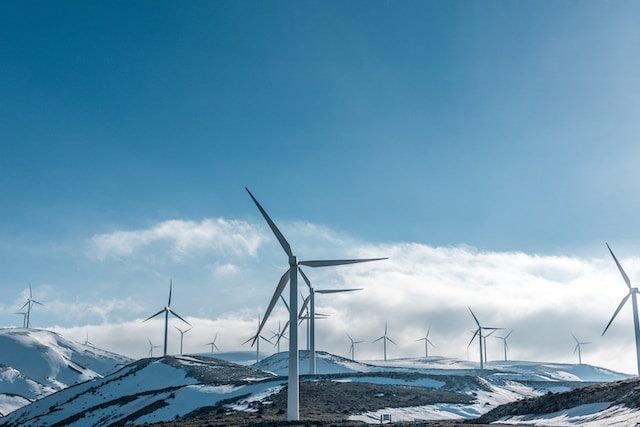
Welcome to our blog post on microgeneration and battery storage! In this article, we will explore how these technologies can enhance the efficiency of wind turbines. Whether you are an environmental enthusiast or simply curious about renewable energy, you are in the right place. Let’s dive in!
1. Understanding Microgeneration
Microgeneration refers to the production of a small amount of energy at the point of use. It involves generating renewable energy on a local or individual scale, rather than relying solely on centralized power plants. Microgeneration technologies include solar panels, wind turbines, micro-hydro systems, and biomass systems.
One of the most promising forms of microgeneration is harnessing the power of wind through wind turbines. These sleek structures convert wind energy into electrical energy, making them a valuable asset in the renewable energy landscape. However, wind turbine efficiency can be further improved by incorporating battery storage systems.
2. Enhancing Wind Turbine Efficiency with Battery Storage
Wind turbines are highly dependent on wind conditions, which can fluctuate. This variability affects the stability and reliability of the energy produced. By integrating battery storage systems, wind energy can be stored during periods of low demand or high wind intensity and released when energy demands increase.
Here are a few ways battery storage enhances wind turbine efficiency:
- Energy Smoothing: Battery storage helps smooth out the intermittent nature of wind energy. It buffers surplus electricity during windy periods and delivers it during lulls, ensuring a more consistent supply.
- Grid Stabilization: Battery storage can help balance the electrical grid by injecting stored energy when there is a sudden drop in wind energy production due to changes in wind speed.
- Time-shifting Energy: By storing excess energy generated during off-peak periods, battery storage allows for energy use during peak demand hours, reducing reliance on non-renewable energy sources.
- Island Mode Operation: In areas where power outages are common, battery storage enables wind turbines to continue generating electricity and power critical loads, creating a more reliable and resilient energy system.
3. Considerations for Battery Storage and Microgeneration System
Before integrating battery storage into your microgeneration system, it’s important to consider a few key factors:
- System Capacity: Determine the amount of energy you need to store based on your consumption patterns and the wind turbine’s output.
- Battery Type: Consider the different types of batteries available, such as lead-acid, lithium-ion, and flow batteries. Each has its own advantages and cost considerations.
- System Sizing: Ensure that the capacity of your battery storage system is adequate to cater to peak energy demands.
- Integration: Figure out how the battery storage system will be integrated with your microgeneration system and the necessary inverters, charge controllers, and monitoring equipment.
- Maintenance and Lifespan: Understand the maintenance requirements and lifespan of the chosen battery technology to optimize long-term performance and cost-effectiveness.
| Battery Type | Advantages | Considerations |
|---|---|---|
| Lead-acid | Low initial cost Widely available Proven technology |
Requires regular maintenance Lower energy density Shorter lifespan |
| Lithium-ion | High energy density Long cycle life Lightweight and compact |
Higher initial cost Complex recycling process Potential safety concerns (if not managed properly) |
| Flow Battery | Scalable capacity Long cycle life Safe operation |
Higher initial cost Larger physical footprint Specialized maintenance requirements |
4. Financial Considerations and Incentives
Adding battery storage to a microgeneration system requires upfront investment. However, it’s important to consider the financial incentives and long-term benefits:
- Reduced Energy Bills: By storing excess energy and using it during peak demand hours, you can significantly reduce your dependence on grid-supplied electricity.
- Sell Excess Energy: In some regions, you may have the option to sell surplus energy produced by your microgeneration system back to the grid, leading to potential earnings.
- Government Support: Many governments offer incentives, grants, or tax credits to promote renewable energy adoption, including the integration of battery storage. Research what incentives are available in your region.
5. Conclusion
Microgeneration combined with battery storage presents a promising path towards enhancing the efficiency of wind turbines. By mitigating the intermittency of wind energy and providing greater flexibility, battery storage systems can ensure a more stable and reliable electricity supply. Before embarking on incorporating battery storage into your microgeneration system, carefully consider the financial, technical, and maintenance aspects to maximize its potential and benefits.
We hope this blog post has provided you with valuable insights into how microgeneration and battery storage can enhance wind turbine efficiency. Remember, every step toward renewable energy adoption contributes to a greener and more sustainable future.
Do you have any questions or additional information to share? Leave a comment below, and let’s continue the conversation!
